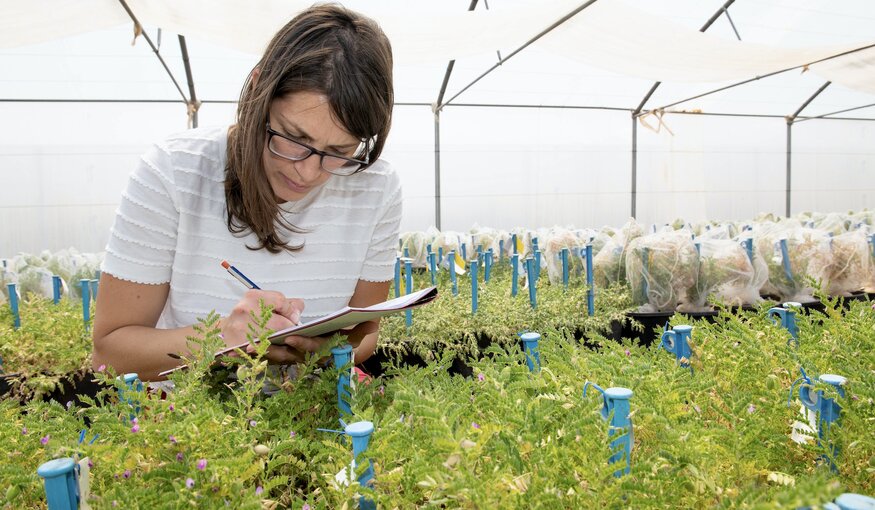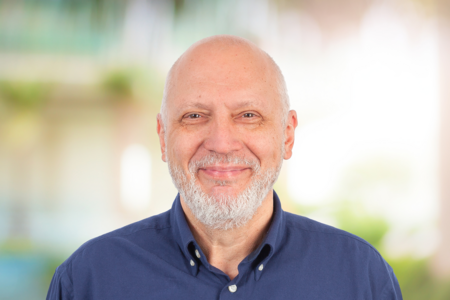Is a Pandemic the Time to Think About Genebanks?

25 April 2020
Reasons to consider seeds in the time of the coronavirus
By Luigi Guarino, Director or Science and Charlotte Lusty, Head of Programs and Genebank Platform Coordinator
Perhaps you think that the middle of a global pandemic is not an appropriate time to be discussing seed banks.
Think again.
Coronavirus SARS-CoV-2 is primarily a health crisis, of course – but it is affecting all parts of society and the economy, a major result being that people are especially worried about where their next meal will come from. With agricultural and food systems reeling globally, the focus of decision-makers is, at the moment, mainly on the business end of the food chain: on keeping global trade moving, supermarkets stocked and people fed. It is not the virus causing large numbers of people to flee Delhi and other large cities in the developing world, but the fear of hunger.
But farmers need to keep producing and selling too, as well as middlemen buying, processors processing. It’s too early to say how exactly the food system will be impacted in the long term. One thing is certain, though: to mitigate the effects of future shocks of the kind we’re currently experiencing, and to allow us to bounce back from them, there needs to be diversity in all parts of the food chain.
In our daily search for pasta and flour, not to mention toilet paper, we are now learning the hard way the benefits of having ready access to more than just one supermarket. In the same way, food companies minimize the risks to their business by counting on multiple suppliers for their raw materials. And farmers, even in a single locality, are more resilient if they grow more than one crop, and even more so if they are able to choose from among different varieties of each crop provided by seed companies and other sources.
But where does such diversity come from?
All too often, we place the beginning of the food chain at the farm, when in fact it extends back further – all the way back to seed banks, also called genebanks. These treasure troves of seeds safeguard the diversity of our crops and make it available to researchers and plant breeders, who in turn use it to develop the knowledge and new varieties that farmers, and consumers like you and me, need. Properly dried and stored at low temperature, seeds of most crops can be kept for decades. If their condition is properly monitored, they can be thawed out and multiplied before they lose viability. If data on their characteristics is easily available, researchers can request the samples they need for their work at the click of a mouse button.
 ICARDA Lebanon Genebank Manager Mariana Yazbek says staff are conducting essential tasks to manage field trials. Staff work in a rotation and go directly from their homes to the field, and then back to home. While at work, staff maintain social distancing guidelines and make sure the daily workers are also abiding by the standards. Photo: ICARDA
ICARDA Lebanon Genebank Manager Mariana Yazbek says staff are conducting essential tasks to manage field trials. Staff work in a rotation and go directly from their homes to the field, and then back to home. While at work, staff maintain social distancing guidelines and make sure the daily workers are also abiding by the standards. Photo: ICARDA
Our crops are just as vulnerable to a multitude of pathogens as we are to the coronavirus. Researchers use the diversity in genebanks to breed varieties that can withstand pathogen attacks, better cope with the changing climate, that are more nutritious, keep longer and taste better. Genebanks underpin the resilience of farmers and of our food system.
We don’t think much about the raw materials behind food as we go through our daily lives, especially when we’re stuck at home in lockdown. But we should. There are hundreds of genebanks around the world – most countries have one – but among the largest, most widely used, and most globally important are the 11 managed by a global agricultural research consortium called the CGIAR. They conserve and make available to users, free of charge, more than 700,000 different types of seeds and other materials.
The CGIAR’s genebanks are going through a difficult time at the moment, just like the rest of us. With social distancing and other restrictions on movement, genebank staff are scrambling to get harvests in before they’re lost; to tend to vulnerable plants in labs, greenhouses and fields; and to maintain other critical conservation measures that are keeping unique diversity alive. It’s an all-hands-on-deck crisis, but maintaining safety paradoxically means that help must also be limited.
Should a genebank lose samples, there are back-ups of many of them in the Svalbard Global Seed Vault, thanks to the planning done by many people over many years for such eventualities. Genebanks can rebuild their collections from safety duplicated seeds, as the International Center for Agricultural Research in the Dry Areas (ICARDA) was able to do when it lost access to its facilities in Aleppo, Syria due to the civil war.
 ICRISAT Head of Genebank Vania Azevedo says the pandemic struck at the most critical time of the year as they have all their crops in the field and harvest just started. The ICRISAT campus went on total lockdown. However, some staff volunteered to remain on the campus to guarantee the harvest. Photo: ICRISAT
ICRISAT Head of Genebank Vania Azevedo says the pandemic struck at the most critical time of the year as they have all their crops in the field and harvest just started. The ICRISAT campus went on total lockdown. However, some staff volunteered to remain on the campus to guarantee the harvest. Photo: ICRISAT
However, the case is different when it comes to conserving roots, tubers and some other vegetative crops, which cannot be saved in the same manner as seeds are in a cold room. For crops such as potato, sweet potato, cassava, banana and yam, the hope is to build collections that can be duplicated and moved around using cryopreservation – an alternative method of cooling tissues, involving deep-freezing with liquid nitrogen.
The CGIAR genebanks will survive this crisis and ramp activities back up to full throttle once it’s over. A significant proportion of their funding is guaranteed, thanks to the endowment of the Crop Trust. The operations of the genebank of International Rice Research Institute (IRRI), for example, home to over 100,000 different rice varieties, are funded by the endowment for the long-term, forever in fact. It’s therefore immune to the vagaries of donor priorities and financial shocks. Another USD 200 million in the endowment would secure the other 10 CGIAR genebanks in the same way.
It’s less easy to be so sanguine about the genebanks of many developing countries. At times of crisis like this, cash-strapped governments are likely to push genebanks even further down than usual on their list of priorities. They need to resist that temptation. Coronavirus SARS-CoV-2 is making clear just how much we need genebanks now, and that we’ll need them even more in the future in the continuing face of climate change and outbreaks of new crop pests and diseases.
So yes, it is the right time to think about genebanks. It’s always the right time.
***
This opinion was first published on Global Landscape Forum.
Categories: Genebank Platform, Food Security

